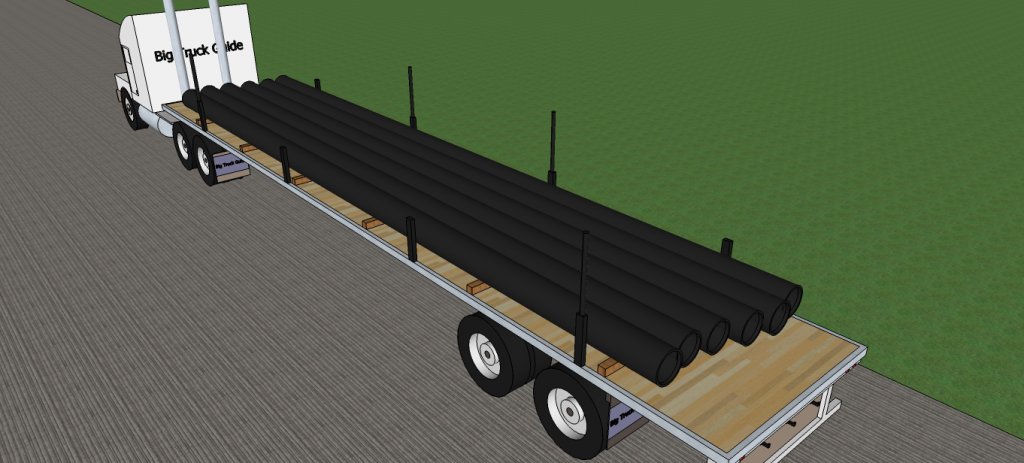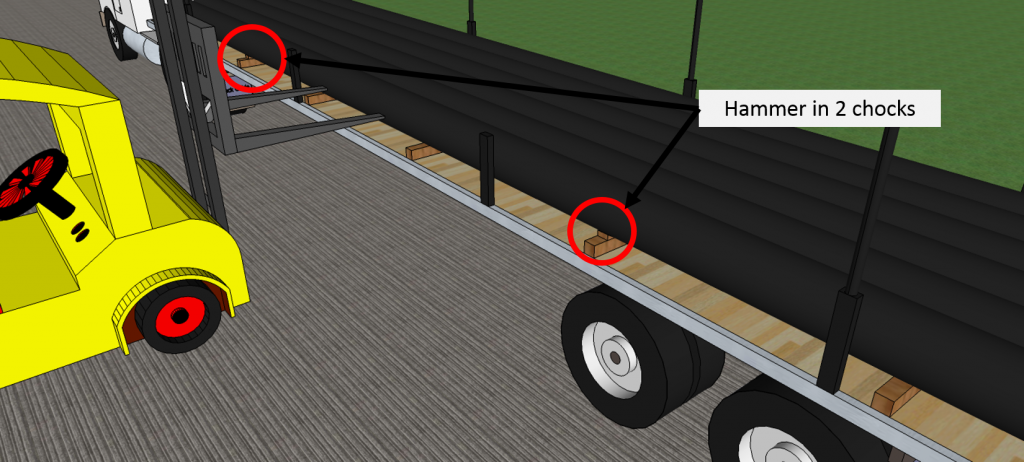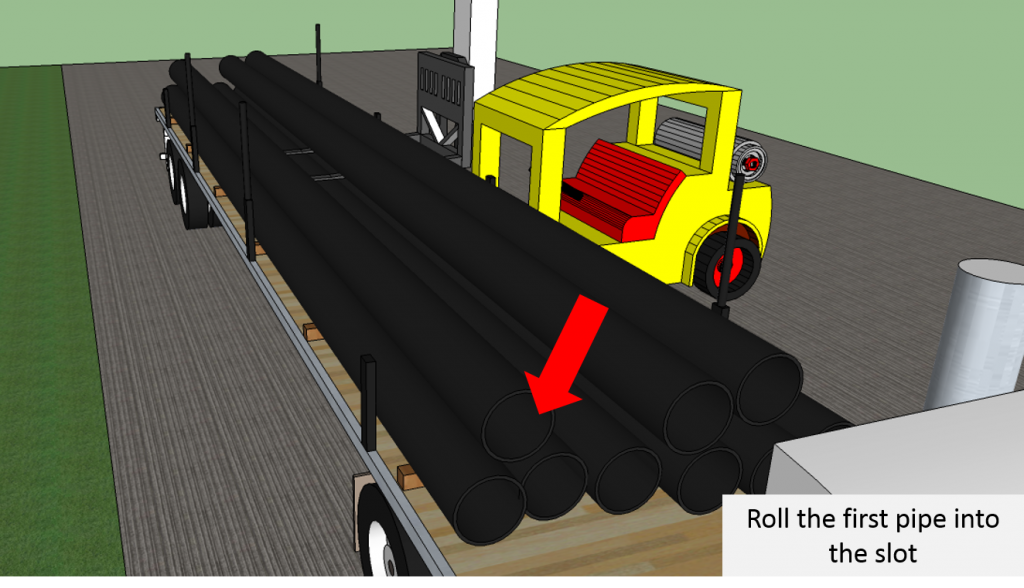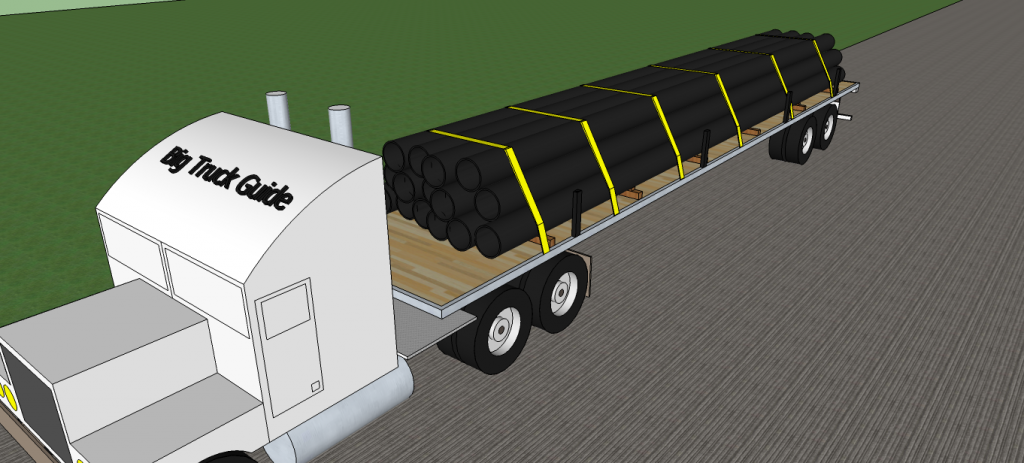Loading pipe for the first time can be intimidating. To do this safely and properly requires some experience and skill, but get into the right habits and it will go smoothly. Pipe can be dangerous, and if not secured properly can be deadly. These instructions describe how to load nested pipe, not pipe assembled into bundles.
Step 1: Set up trailer

First, set up the dunnage on your trailer, and make sure that you are in a safe area where no one can walk by without you knowing. Be sure to use hardwood dunnage, 4” X 4” works well, but the ideal is 3” X 4”. Having dunnage wider than it is tall will ensure that it can’t roll, and is much safer. Be sure to place the dunnage on top of a cross member so you don’t unnecessarily put strain on your deck. Put the end pieces down so that the pipe only reaches over each side by a maximum of 2’ or so, and then adjust the placement of the central pieces accordingly.
Make sure that you have enough stakes for the length of your pipe, and use high stakes or stake extensions that go about 4’ up from your deck. You want to make sure that if the forklift operator loses control of the pipe, it won’t fall off your deck potentially injuring someone.
Step 2: Loading the first tier

Stand on the back of the truck and direct the forklift operator to place the pipe in the distance that you would like from the front of the trailer. The further back you put the pipe, the more weight you will have on your trailer axles and putting them further ahead will put more weight on your drives. If you are unsure, ask the operator or other drivers for their advice where they would load the pipe on the deck.
Step 3: Hammering in Chocks

After the first tier is loaded, ask the forklift operator to hold the pipe tight against the other side with the forks of the lift truck. While they hold the pipe tight, hammer in two chocks to keep the pipe tight against each other. This will help you build a tight pyramid.
Step 4: Setting up the second tier

The operator will bring the next lift of pipe. Stand on the back of the truck and direct the operator to leave his forks on the second pipe from the end. Then, roll the first pipe into the first slot. Be careful! If you overshoot the slot, the pipe will fall over and you will have to have the operator come to the other side of the trailer and pick out the fallen pipe (they don’t like doing that). After the first pipe is set, the operator can roll the rest of the pipe off the forks by backing up. The rest of the load should be loaded in this way.
Step 5: Strapping down your load

Now, the load is all on your truck, and it’s time to strap it down. First, don’t move your truck with the load unsecured! Always put two straps over it even if you are only going to move your truck a few feet, then when you are out of the way, you can finish strapping down the load. Remember your securement rules:
- If the load is not against a head board (it’s not) you need 2 straps in the first 10 feet, and at least one for every other 10 feet of load (or portion of)
- You need enough straps to handle 50% of the weight of the load
This load is:
- 44,000 lbs
- Approximately 41’ long
Securement requirements:
- There need to be at least 6 straps to satisfy the length requirement (2 for the first 10’ and 4 for the remaining 31’)
- There needs to be enough securement to hold down 22,000 lbs (50% of 44,000 lbs.) Assuming straps with a working load limit of 5,000 lbs, the load requires 5 straps to satisfy the weight requirement (5 X 5,000 lbs = 25,000 lbs).
This load secured with 6 straps will be good to go down the highway. Some drivers prefer to have 2 of the straps be belly wrapped around the load, and many companies require belly wraps as policy.
Finally, take down your high stakes so you don’t look silly going down the highway! Happy Hauling!
